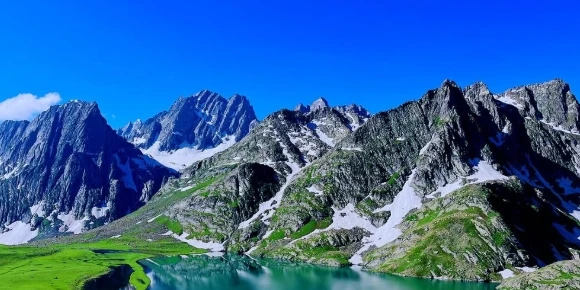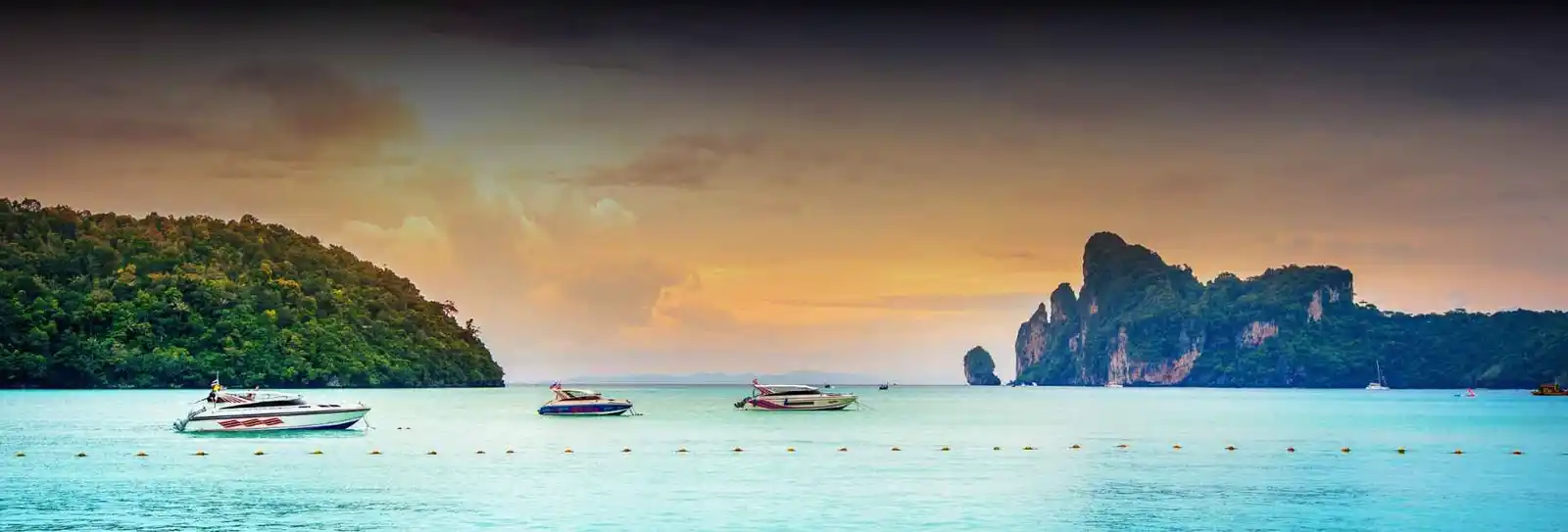
A Himalayan trek is an experience-rich journey into the most scenic landscapes of nature. From India to Nepal, Bhutan, and finally Tibet, the Himalayas provide the trekker with a multicultural canvas of experience, varied green valleys and pine forests, to snow-white peaks and serene alpine lakes. Every one of the treks in this great mountain chain has its charm and challenge, inviting the adventure-seeker, nature enthusiast, and spiritual pilgrim from across the globe. Himalayan trekking is not physical fitness alone; it is an experience of nature, culture, and personality building. Trekking routes pass through the mountain village, and the trekking team can mingle with the mountain folks and villagers and acquaint themselves with their lifestyle, language, and culture. The warm hospitality and generosity of the mountain folks, especially of Nepal and Himachal Pradesh, contrast poignantly with the toil.Histry top-selling Himalaya treks such as Everest Base Camp Trek, Annapurna Circuit, Roopkund Trek, and Valley of Flowers are a mix of challenge and scenery. While some of them are ideal for beginners, others require acclimatisation to high altitude and previous experience in trekking. No matter how long the track is, there can be nothing like the feeling of awe and humility when one is lucky enough to get a glimpse of the snow-covered summits of Everest, Kanchenjunga, or Nanda Devi. April and June and September, and November are the best months for Himalayan treks, when neither hot nor cold weather, with stable weather and clear weather, having a good forecast. Trekkers have to be well-planned, with provisions for altitude sickness, climate, and physical strength. Well-planned, a Himalayan trek is not a journey; it's a self-awareness experience and an etched memory forever.History of Himalayan TrekkingThe past of Himalaya trekking is entwined with adventure, religion, and exploration. The Himalayas have been a matter of serious concern for pilgrims, sages, explorers, and mountaineers since time immemorial. The trekking routes of the Himalaya were traversed by monks, merchants, and nomadic tribes centuries ago, before trekking had been added to sports. India was linked with Tibet and China via ancient trade routes across high-altitude passes such as Nathu La and Lipulekh, via which salt, wool, and spices were exchanged, as well as pilgrim routes to sacred places such as Mount Kailash and Amarnath. The modern era of Himalayan trekking started in the colonial period when the British surveyors and mountaineers first ventured close to the region for scientific as well as exploratory purposes. The Great Trigonometrical Survey of India in the 19th century were the first systematic effort to chart the high mountain peaks, such as Mount Everest. In the mid-20th century, the successful climb of Everest by Edmund Hillary and Tenzing Norgay in 1953 created a surge of interest in Himalayan mountaineering and trekking.Nepal legally opened up during the 1950s, and trekking routes such as Everest Base Camp and Annapurna Circuit were developed. India initiated the promotion of trekking in the states of Himachal Pradesh, Uttarakhand, Sikkim, and Ladakh. With an increase in infrastructure, guide treks, tea houses, and supporting infrastructures, Himalayan trekking transformed into a popular hobby for adventure enthusiasts. Himalayan trekking is a flagship industry of the South Asian tourism industry today. While it has brought glory and development to far-flung areas, it has also created concerns of environmental sustainability and conservation and cultural concerns. Sustainable and responsible trekking activity is now encouraged in an eco-friendly manner. Even after several decades, the Himalayas continue to be a challenge, a mystic, and a timeless symbol, and generations of trekkers have been attracted by them.Nearby Places of Himalayan TreksManali: Himachal Pradesh's hill station gem, Manali, is the beginning point for all treks such as the Hampta Pass and Bhrigu Lake. Enveloped by pines and mountains, Manali is a trekking point as much as it is a cultural hub where Tibetan monasteries, local bazaars, and adventure sports such as paragliding and river rafting are seen.Rishikesh: A holy town in Uttarakhand is Rishikesh, with yoga camps and the sacred Ganges. Some treks in the Garhwal Himalayas, like the Valley of Flowers or Kedarkantha, begin close by. Rishikesh is a serene retreat before or following a trek with river rafting, meditation, and temple-hopping on the cards.Leh: Leh is a high-altitude town in Ladakh and a trekking base for the Markha Valley, Stok Kangri, and Chadar Trek. Its rough terrain, Buddhist monasteries, and unique Tibetan-influenced culture are some of the reasons it's a fascinating place to visit. Acclimatisation at Leh is necessary before treks since it's more than 11,000 feet.Kathmandu: The capital city of Nepal, Kathmandu, is the starting point for treks such as Everest Base Camp and Annapurna. There, one sees a mix of old culture and trekking infrastructure in the modern world. One can buy temples, dine in local restaurants, and organise equipment in the Thamel district, which is the tourist area, before one even sets foot on the trail.Best season to trek in the HimalayasSpring (March to May): Spring is one of the best seasons to travel in the Himalayas. Paths come alive amidst snowfall, and nature gets rejuvenated by rhododendrons, greens, and a colourful landscape awakened. The weather is crisp and cool, and treks to Sikkim, Uttarakhand, and Himachal Pradesh go into full action. Treks such as Kedarkantha, Har Ki Dun, and Sandakphu are utterly stunning during the spring season.Summer (June to Early July): Early summer is best for a visit to high-altitude treks, with otherwise remaining snow-bound. Rupin Pass, Buran Ghati, and Ladakh treks are open. Afternoons are fine, though nights are chilly. A good choice for one who is still not ready to experience extreme cold and yet wishes to see a snowfield and unobstructed mountain views.Monsoon (Mid-July to August): Monsoon is not advisable for most Himalayan treks because it is accompanied by heavy rain, slippery terrain, and greater chances of landslides in the Uttarakhand and Himachal Pradesh states. Rain-shadow areas like Ladakh and Spiti are rain-free, though, and perfect for monsoon trekking. Markha Valley and Stok Kangri treks are possible with safety during this season.Autumn (September to November): The season for Himalayan trekking is autumn. Dust is cleaned out by the rains of the monsoon, and therefore, the sky is clear. The environment is nice with good visibility of the snow tops. Treks such as Everest Base Camp, Annapurna Circuit, and Goechala of Sikkim are to be done at their best during this season.How to reach the Himalayan trekBy Airport: The easiest approach to Himalayan trekking destinations is by air. Dehradun, Leh, Kathmandu, Bagdogra, and Srinagar airports have air links to Delhi and major Indian cities. Tribhuvan International Airport in Kathmandu is the major entry point for Nepalese treks. Taxi or local-level organised transport will transport you to the base village or trek start from your arrival point. Helicopter flights are also run in remote areas, particularly in Nepal.By Train: Train travel is a cost-effective and picturesque way of accessing Indian Himalayan treks. Trains to places like Haridwar (for Uttarakhand), Kalka (for Himachal Pradesh), and New Jalpaiguri (for Sikkim and Darjeeling) are well connected to all the major towns. You can approach the trekking spot by bus, taxi, or jeep from the station.By Road: Road transport is necessary to access the most distant point of starting for most Himalayan treks. Following a flight or train ride, trekkers travel on roads by state bus, taxi, or personal vehicle. Mountain roads wind and slope but provide bird's-eye views of river valleys, rivers, and snow summits. Off-road transport is sometimes necessary, e.g., on bad roads such as Ladakh or Spiti Valley.Local Transport: Transport facilities are lacking in far-flung Himalayan regions. Public transport available is a rented taxi, a bus, and a jeep. Horses or porters are available in some areas, which are rented for carrying the gear to higher camps. Prebooking and local booking and planning, particularly pre-monsoon trekking months, are recommended.Why Book with escape2exploreWhen exploring Himalayan treks and beyond, escape2explore stands out as a trusted name in adventure and experiential travel. Here’s why hundreds of travellers choose us for their getaways:Trusted, Well-Reviewed Local Operator: escape2explore has gained the trust of thousands of content tourists all over India. With persistent positive feedback and an unblemished reputation for delivering quality experiences, we assure you that your experience will be hassle-free, memorable, and value-packed. Our insider local knowledge guarantees that you will always be in safe hands.Seasoned Guides: Our trips are led by friendly, trained, and professional guides who are passionate about the outdoors and your safety. Whether it's a beach trek, a cultural tour, or a spiritual walk through temples, our team knows the terrain, the stories, and how to make each moment count.Safe & Curated Itineraries: Your safety is our number one priority. Our tour packages are thoughtfully crafted with safety measures, researched accommodations, and easy travel arrangements. We take care of the details so you can have the experience hassle-free and worry-free.Unique Experience That You Won't Find Anywhere Else: With escape2explore, you discover more than the tourist attractions. We go off the beaten track with hidden beaches, unusual treks, offbeat cultural destinations, and true interactions.Read: Rajgad Fort|Sudhagad Fort|Maharashtra Getaway|Treks in Maharashtra|Camera Tips


